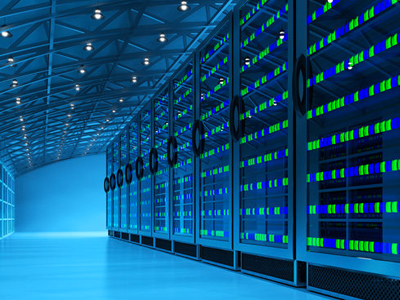When evaluating the impact of hyperconverged infrastructure on your data center, it’s important to remember that hyperconverged infrastructure affects your network as well as your servers and storage.
Hyperconverged Infrastructure Requires Virtualization
Hyperconverged infrastructure achieves its flexibility through virtualization. The CPU and storage resources are pooled as a shared resource allocated among the virtual machines (VMs).
Network virtualization in hyperconverged infrastructure isn’t as straightforward. The VM’s network interface card can be virtualized and treated as pooled adapter. While that virtualizes input/output control, going beyond that to true network virtualization requires the ability to control network switches and controllers. Nutanix supports networking features that include microsegmentation.
Handling the Demands of Hyperconverged Infrastructure
Hyperconverged infrastructure tends to create high load on the network. This is the result of nodes that provide both storage and compute, along with replication and deduplication functions. Demand on the network also reflects load balancing that moves VMs between nodes.
As a result, the network needs to have a robust design to handle high demand and a robust management interface. Expect to use a minimum of 10 Gigabit Ethernet (GbE), with 40GbE preferred for at least the most critical network elements.
Latency is another important factor to address, through use of low-latency switches and a flat network topology. Consider using virtual LANs that prioritize storage data.
Hyperconverged clusters provide high availability of servers and storage; the network must also be highly available, with redundancy that allows nodes to remain accessible even if a link fails.
Another important consideration in hyperconverged networks is the network management software; it must be able to efficiently establish data paths as VM’s are created and moved among servers. The software should make it easy to establish policies and automate basic operations. The system should have reporting capability that identifies potential failures as well as over and underutilized resources that are affecting the cluster’s performance. There should also be at-a-glance visualizations of both the physical and virtual network topologies.
Of course, network security remains an important consideration, especially for networks defined through software. Hyperconverged systems that provide microsegmentation and flow visualization make it easy to understand and manage data flows from an application perspective.
Managed Nutanix services from dcVAST ensure that your business gets full advantage of the flexibility offered by hyperconverged infrastructure. Whether you want to implement a private cloud, a hybrid cloud, or simply want scalable, manageable infrastructure, Nutanix support from dcVAST makes sure your servers, storage, and network work together as a unified system in support of your business. Contact us to learn more about how to choose and implement the hyperconverged solution that’s right for you.


